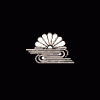-
Posts
925 -
Joined
-
Last visited
-
Days Won
23

Markus replied to shan's topic in General Nihonto Related Discussion

Markus replied to shan's topic in General Nihonto Related Discussion

Markus replied to Millsman's topic in Translation Assistance

Markus replied to b.hennick's topic in Translation Assistance

Markus replied to Marc BROQUIN's topic in Tosogu

